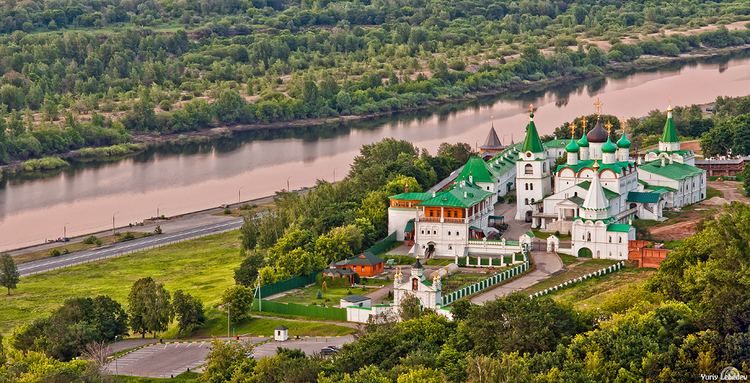Public access yes | Established 1328 Phone +7 831 432-66-50 | |
 | ||
Full name Pechersky Ascension male Monastery Visible remains church, cloister, inner court and earthworks Address Privolzhskaya ul., 108, Nizhnij Novgorod, Nizhegorodskaya oblast', Russia, 603093 Similar Cathedral of the Archange, Nizhny Novgorod Kremlin, Alexander Nevsky Cathedral, Nativity of the Virgin Mary Cat, Chkalov Stairs | ||
Pechersky Ascension Monastery (Russian: Печёрский Вознесенский монастырь, Pechyorsky Vozensensky Monastyr) is a monastery in Nizhny Novgorod, Russia. It is the principal monastery of the Nizny Novgorod Eparchy (diocese) and the seat of the Bishop of Nizhny Novgorod and Arzamas.
Contents
History
Pechersky Voznesensky Monastery is usually said to have been founded ca. 1328-1330 by St. Dionysius, who came to Nizhny Novgorod from Kiev Pechersk Lavra (i.e., Kiev Monastery of the Caves, pechery meaning 'caves') with several other monks, and dug for himself a cave on the step Volga shore some 3 km southeast of the city. Later on, he founded at that site a monastery with a church of Resurrection of the Lord.
The monastery soon became an important spiritual and religious center of the Principality of Suzdal and Nizhny Novgorod.
The monastery was destroyed by a landslide on June 18, 1597; surprisingly, no one died. The same year the monastery was rebuilt about 1 km upstream (north) of the old site.
Although there are no caves in the modern monastery, the appellation Pechersky, linking it to the old Kiev cloyster, has been preserved. Moreover, the entire section of Nizhny Novgorod surrounding the monastery, occupying uplands above the Volga south of the city center, is known as Pechery.
The monastery was closed by NKVD in 1924, and reopened in 1994.
Principal buildings
The principal buildings of the monastery include:
The belfry of the Ascension Cathedral (which also serves as a clock tower) is noticeably out of plumb. It has been leaning almost since the time it was originally constructed.
The monastery is surrounded by a red brick wall with small towers, making it look like a small kremlin.
The diocesal archeological museum and a book and icon shop operate in the monastery. In the latter, one can request a variety of prayers for the living and dead, in accordance with the posted fee list.
